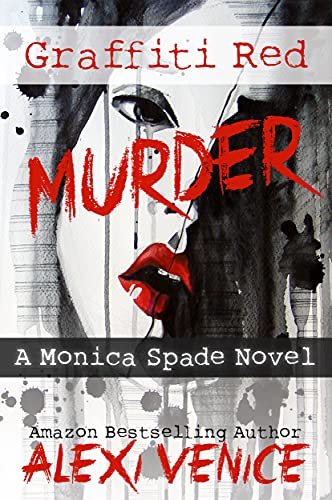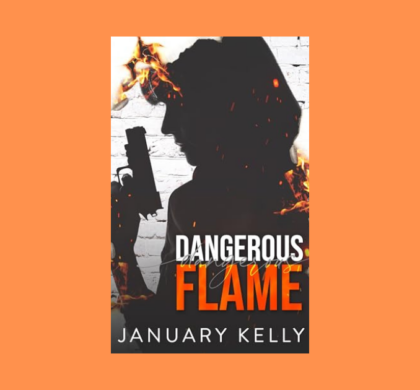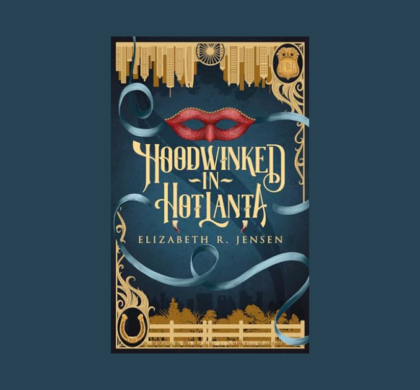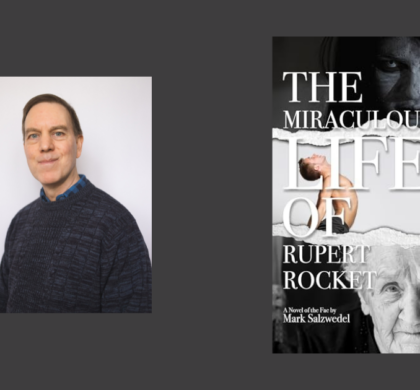Interview with Alexi Venice, Author of Graffiti Red Murder
07 Jul 2021
What can you tell us about your new release, Graffiti Red Murder? It’s a full-length, standalone mashup of crime thriller and lesbian romance. In this third book of the Monica Spade Trilogy, Monica is drawn deeper into the criminal world as she tries to stop a serial killer from striking again, giving new meaning to the word deadline. In her personal life, Monica suspects her girlfriend, Shelby, is rekindling a romance with an ex-lover, a yogi sensation with a body to die for. Can Monica control her temper when the yogi provokes her? Why have you chosen to add lesbian romance to your legal and crime thrillers? No matter what the genre is, I love reading and writing about two women falling in love, or figuring out how to keep the relationship fresh as they navigate an adventure. Even though my crime-fighting heroines are solving a murder or trying a case in court doesn’t mean they can’t live rich, romantic lives, right? Their work just happens to be in law enforcement and criminal justice, or in the case of Dr. Jen Dawson in The San Francisco Mystery Series, a colorful clinic. How do you keep the reader in a state of suspense? I try to end chapters like I open a bottle of champagne—with a pop and fizz—so the reader is excited to pick up where he/she left off. Then, I let the plot unfold in a natural, organic manner, dropping clues like little gems and introducing sketchy characters. Pacing is important, and for Graffiti Red Murder (GRM), I chose a fast tempo because Monica is on a tight deadline. Her personal life is also thrown into chaos, ratcheting up the tension as she faces dangerous obstacles. How important is it to keep readers guessing and how do you accomplish this? The general rule in detective novels is that the detective isn’t required to share her deductions with the reader. The reader sees the same clues as the detective, but the detective can withhold some of her analysis of those clues. In GRM, Monica discusses a few of her hunches and observations with her friend, Detective Matt Breuer, so the reader is privy to Monica’s part of Monica’s thought process through their dialogue. When things come together in the last quarter of the book, the reader should be pleasantly surprised and entertained, but not shocked by the outcome. How do you insert red herrings without making it feel like there are a lot of plot points that go nowhere? I use red herrings judiciously so the reader doesn’t feel like he/she is wasting mental energy. Red herrings should be plausible explanations for clues and suspects, and the reader should be thinking of them too. I like to have the main characters debate red herrings during the story, hopefully fleshing out the reader’s thoughts along the way. Discussion of a juicy red herring often leads to a legitimate clue. Why is the scene of the crime particularly important in a crime thriller? In the case of the serial murders in GRM, some clues derive from the evidence gathered at the scenes. The killer might intentionally, or unintentionally, leave something on the victim or nearby. In GRM, the sinister message spray-painted on the victims is the killer’s signature, generating the title of the book. There isn’t always a murder weapon—and prosecutors don’t need one to charge and convict—but the markings on the body sometimes indicate how the victim was murdered. Some readers delight in looking for clues with Monica during various scenes, so I try to deliver riddles for the curious mind. What do you do to keep readers interested in the main character? For Monica Spade, I think she’s as relatable as she is fascinating. She’s a newbie lawyer who finds herself thrown into the world of criminal justice, then discovers she has a gift for it because she’s smart and has good instincts. In her personal life, she’s insecure about her weight, appearance, and sex appeal. She’s attracted to Shelby St. Claire, the fittest, sexiest woman at CrossFit, so that crush feeds on Monica’s insecurities. If Monica starts dating Shelby, will Monica be enough? Will jealousy over Shelby’s exes eat away at Monica? Is there some competition lurking in the background? We care about Monica and want her to succeed, but life isn’t handed to her on a silver platter. She has to work for everything she has. Along the way, we get to see what she’s made of as she gets scorched by life’s wildfires. Crime and mystery themes tend to be good for series books. What can you do with a series in the genre that you cannot do with a once-off book? Take readers on an extended magic carpet ride. The reader experiences the characters’ innermost struggles and anticipates how the characters will react to certain situations. The crimes and court cases are new, testing the grit and mettle of the characters, allowing me to polish each character’s specific personality, goals and agenda. Tell us what kind of heroines you prefer to write about. Flawed but endearing. Characters with insecurities, addictions, faults, bad habits, mood swings, impetuous behavior, occasional grandiose ideations, and most of all, sharp senses of humor. Books are supposed to be entertaining and transport us from current reality. While my legal and crime thrillers generally have a serious theme, the personal lives of the characters are EXCITING. This construct requires a voyeuristic view into their personal space, including their bedrooms and sex lives. (Although not all sex takes place in the bedroom in my books). In a nutshell, I like to write thrillers with tons of lesbian romance at a high heat level. What sort of research do you do for the crimes themselves and how important is authenticity? The police procedure and courtroom drama in my books are based on my 32 years of practicing law. You wouldn’t believe what happens behind the scenes during a jury trial. Where needed, I take poetic license to spice things up so the reader is always entertained. No one wants to read boring testimony in court. I like to build action and keep the readers on their toes. What is the hardest part about writing a complex, standalone book for you? Creating the story and writing the first draft is the easiest part for me. That usually takes about three months. Then I spend six months editing and rewriting based on feedback from colleagues with subject matter expertise in criminal law, then two professional editors get a crack at it, and finally, a few proofreaders round out the team. All of that collaboration and rewriting is deliberate, methodical work. It requires a level of discipline that is contrary to my spontaneous and impatient personality but really pays off in the end with a quality product. I’m committed to delivering a book that is professionally polished. My readers deserve the best for the price, so why settle for anything less?
Sign up for our email and we’ll send you the best new books in your favorite genres weekly.




